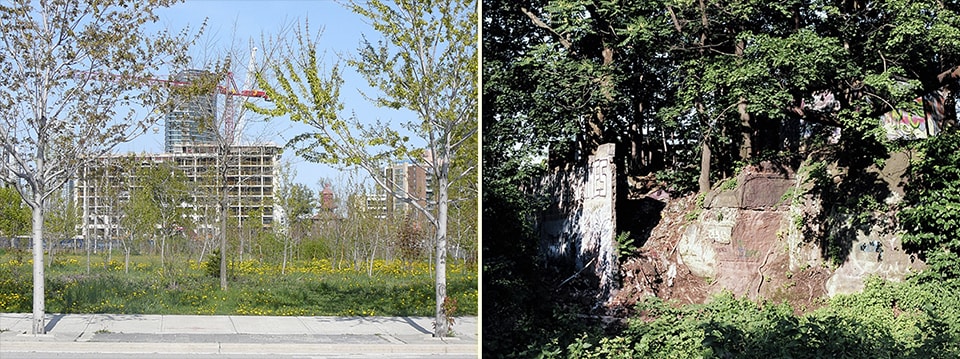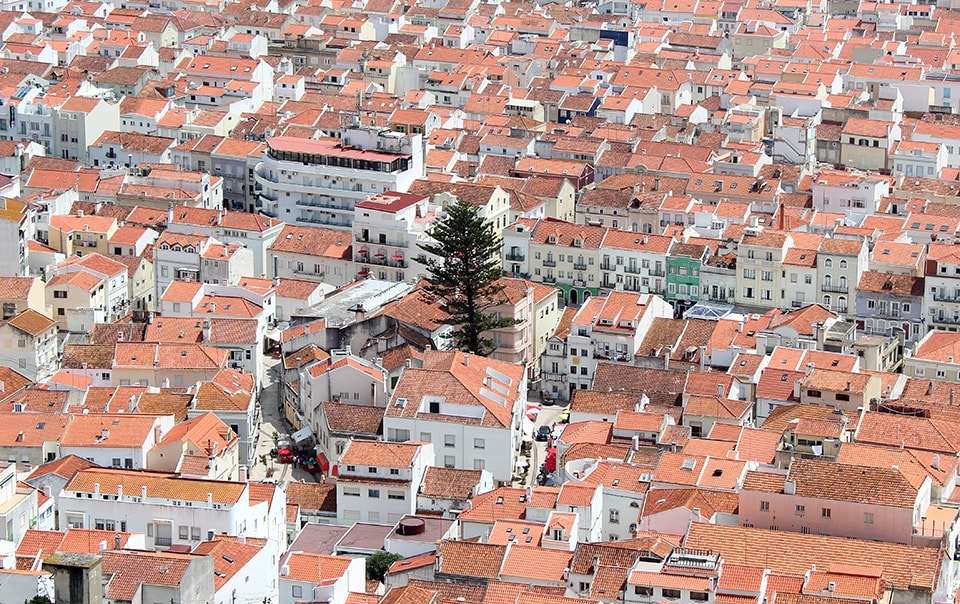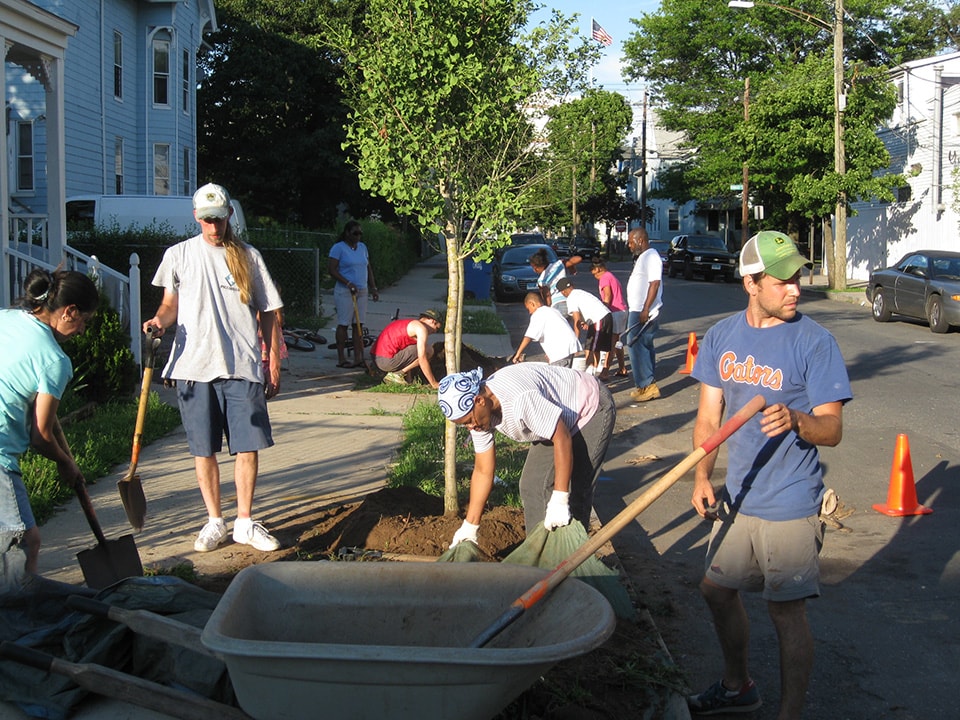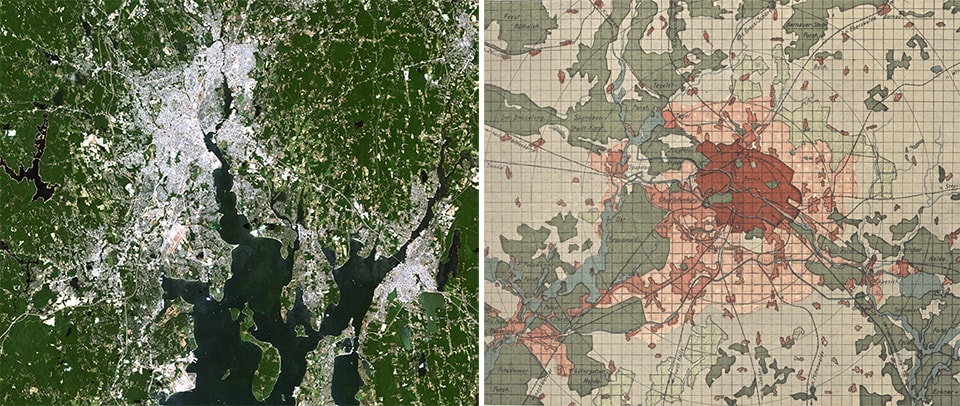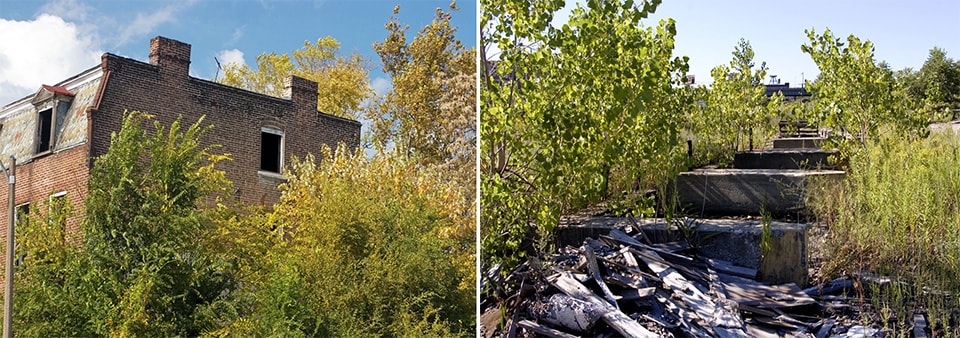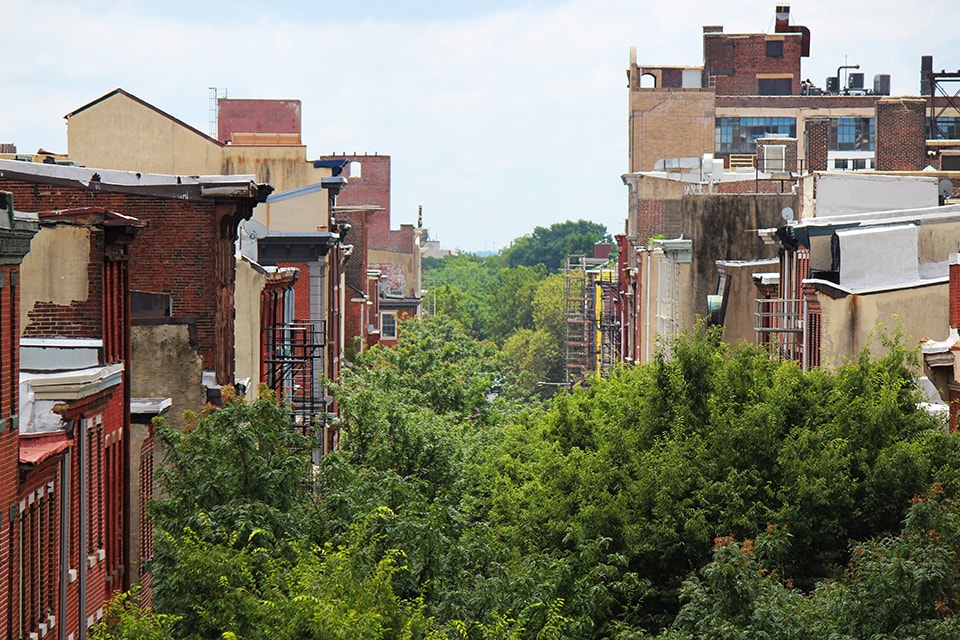The urban forest is a public source of incredible environmental services [1] and deep cultural meaning — it is also a resource that we are rapidly losing. In the urban areas of the United States the forest cover is estimated to be disappearing at 7900 ha/year, or 4.0 million trees/year [2]. There is an urgent need to more effectively and sustainably manage urban forests.
Over the past three decades, a diverse community of environmental managers, researchers, municipalities, and communities have taken on this issue through engaged, on-the-ground actions — representing an expansion in both the science and management of the urban forest [3]. Along the way, our perspective on urban forests has evolved and deepened, reminding us that there is a great deal that we need to learn about the functions and principles of these urban environments.
Urban forests are complex ecosystems, and increasingly we have come to understand that urban forests both reside within the dynamic landscape of the city and are integral to the city’s function and experience. As such, we are beginning to understand that to achieve ambitious management goals, we must not limit the practice of urban forestry to only foresters, arborists, and horticulturalists. Urban forests and urban forestry represent a site, system, and practice full of opportunity for expanded research, innovation, and cross-disciplinary collaboration. But as with all interdisciplinary mixing, entry into the foreign vocabulary, theoretical frameworks, and trade of another field is often difficult to initiate and navigate. In this piece we broadly introduce and examine some of the key concepts, techniques, and challenges of urban forestry, with the hopes of providing a resource and a point of departure for a non-forester seeking to explore and engage with this complex and rapidly evolving field.
Images by Steve Harris [Left] and Anthony Fine [Right]
Defining urban forests & urban forestry
At a fundamental level, a forest may be defined as “a three-dimensional ecological system dominated by trees and other woody vegetation that exists in dynamic interaction with the air-earth matrix of the landscape” [4]. An urban forest, however, is less clearly delineated. In practice, the scope of what is considered an urban forest can differ based on three defining components: which structural elements are considered (from a single tree to connected canopy or greenspace), what scale is counted, and what benefits or services are prioritized for management [5,6]. Are trees isolated in curb cuts a piece of the urban forest? Are saplings and emergent vegetation in a vacant lot? Or is the urban forest only found in large tracts of connected canopy on the urban edge?
Urban forestry, as a practice and a field of study, is also a challenge to define and is both historically and culturally contextual [7]. Historically, in the United States, the term “urban forestry” first appeared in the late 1890s [8], and was associated with arboriculture, which focuses on the management of individual trees or collections of highly managed trees in parks and gardens. The practice of professional forestry in America, which also emerged in the late 1800s, did not focus on urban forests, which were at the time viewed as systems too fragmented and broken to be evaluated or managed using traditional methods. As a result, the ecological study and management of urban forests lagged behind their more rural counterparts. Conversely, in Europe, urban forestry historically concerned itself with the management of peri-urban forests and urban woodlots [9], and as a result remained more closely connected to traditional forestry practice, but located itself at the periphery of the city, and therefore was more spatially and typologically constrained. Since the 1960s and 70s however, we have seen a rapid expansion of the practice of urban forestry in the United States and a broadening of the definition of the urban forest that has become increasingly comprehensive [10].
Presently, within the United States urban forests are defined, by the U.S. Forest Service and many practitioners and municipalities, as “all publicly and privately owned trees within an urban area — including individual trees along streets and in backyards, as well as stands of remnant forest” [11]. When considering the U.S. Forest Services definition of “urban” [12], this classifies nearly 25% of the U.S. land area as urban forest [13]. As a practice, the American Society for Foresters defines urban forestry as “the art, science, and technology of managing trees and forest resources in and around urban community ecosystems for the physiological, sociological, economic, and aesthetic benefits trees provide society” [14]. In both of these definitions we see the forest described as more than a collection of trees, but rather a complex system defined by multiple and layered functional parts.
The recognition of an urban forest as a system is perhaps best exemplified by the increasingly common description of urban forests as elements of green infrastructure [15]. Such definitions challenge us to extend our consideration of the urban forest to include the entire urban forest ecosystem as a functional whole. This conceptual lens requires the integration of expertise from outside the realm of ecological science, to include engineers, architects, and landscape architects — those practiced in building the urban landscape. As we begin to embrace such broad definitions of urban forestry in our study, practice, and discourse, this new integrated community of urban foresters will be tasked to develop and refine the operational definitions that direct future action.
Image by Remy Rolf Lambert
What makes urban forests unique?
Foresters rely on silvics — the knowledge of how trees grow, reproduce, and respond to environmental changes — to help define and describe forests, understand growth, and guide management over time [16]. Fundamentally, forests are classified by their composition and structure: trees’ distribution in space (vertically and horizontally), as well as the size, age, and condition of species [17,18,19]. Characteristics such as climate, temperature, water availability, and soil nutrient capacity are determinants of a site – “the sum of environmental factors surrounding and available to the plant at a specific geographic place” [20] — and describe the natural potential for given forest type at a given location. Forest managers use their knowledge of site and silvics to alter forest structure and composition in order to meet a desired set of economic, social, and ecological goals [21,22]. Therefore, the observed composition, structure, and function of a forest are a reflection of both biophysical site factors and deliberate management regimes [23].
While urban forests are characterized under similar principles, the complexity of urban site conditions results in fragmented forest structure and composition, as well as accelerated disturbance regimes and changes in resource availability, all of which alters the growth and silvics of individual trees. Research has found inhibited tree growth rates to be correlated with many urban site factors: constrained growing space [24], low soil moisture [25], excessive soil moisture [26], increased evaporative demand [27], limited nutrient availability [28], disease and pathogens [29], pests [30], competition with understory vegetation [31], and competition with neighboring trees [32].
Urban environments are not entirely hostile to tree growth. Warmer and more stable temperatures, high CO2 concentration, and altered rates of nutrient deposition in cities have been shown to cause accelerated growth rates [33]. Contributing still more complexity, human dynamics can also be correlated to forest demographics, both positively and negatively, adding a social dimension to urban forest systems [34]. Over time, these physiological stress responses result in larger changes in forest structure and composition. This high degree of complexity and variability is a significant challenge to developing appropriate policy, analyzing management scenarios, planning for spacing and infrastructure constraints, and determining best management practices for the selection, siting, planting, and maintenance of urban forests [35,36,37,38]. Urban ecology is beginning to map the variable site conditions that define urban areas, but our understanding of the physiological response of trees and forests to urban stressors is still relatively nascent when compared to traditional forest ecology.
The value of urban forests
The description of urban forests as elements of green infrastructure is a relatively recent trend, driven by the recognition, and valuation, of ecosystem services — the measureable benefits that people can derive, directly or indirectly, from a suite of environmental functions [40,41]. The most basic of such benefits include, but are not limited to: thermal regulation, improved air quality, stormwater management, and provision of habitat. At the level of the individual tree, these functions are often correlated with tree and crown size, two measures most often used as indicators in tree surveys and management plans. Recent studies illustrate a direct relationship between the benefits of trees and their leaf-atmosphere interactions, suggesting that these services are a function of tree canopy volume and leaf area [42,43,44]. When scaled up, the components of forest structure — the distribution of species, size, age, and condition — determine the quality and quantity of ecosystem services that the urban forest is able to provide [45].
There are also many social and cultural benefits for individuals and communities offered by urban forests, although these are highly variable and more difficult to measure. The aesthetic values of urban forests contribute to recreational enjoyment, quantifiable improvements in mental and physical health, significant emotional, spiritual and personal well-being, reductions in stress and anxiety, and perceptions of privacy, safety and community cohesion [46]. Similarly, community forestry and citizen-based tree planting programs have been correlated with benefits for participants and the associated neighborhoods [47].
Urban Resources Initiative in New Haven, CT. Image by Christopher Schaefer.
At a fundamental level, people like trees and value the benefits that they provide. However, within urban forestry and ecosystem service literature, there is a noticeable gap in defining and quantifying these social and cultural values — a reflection of the need and opportunity for urban forestry to integrate with other urban practitioners, most notably designers, who routinely describe the social and cultural benefits of their interventions.
This increasing recognition of ecosystem service value is changing the perception of nature in cities and is a result of the recent surge in the systematic assessment and the quantification of urban forests benefits [48,49]. Additionally, software that assesses and models ecosystem benefits, such as iTree and inVest, has made the quantification and comparison of ecosystem services both commonplace and cost-effective. Any discussion of urban forest benefits — aesthetic and socio-cultural values, energy and climate management, air and water quality, storm water and soil retention, habitat and biodiversity enhancement, carbon sequestration, or economic benefit — will now assuredly include an estimated dollar amount.
Foxboro, Massachusetts [Left] and Berlin Park System Plan (1909) [Right]. Image by NASA Goddard Space Flight Center [Left]; Penn State University Libraries [Right]
Planning, planting, & growing the urban forest
Recognizing both the many benefits of urban forests and the continued decline in urban canopy cover, cities and municipalities across the country have developed urban forestry programs, management plans, and urban forest goals driven by public policy and municipal mandates. Within the United States, the majority of municipal afforestation goals and urban forestry plans are tied to a single metric — urban tree canopy, or canopy cover [50]. A recent study determined that 38.9% of 329 U.S. cities with populations of 50,000 or greater have adopted a canopy cover goal [51], most of which reference targets established by American Forests, who recommends an canopy cover of 40%, with more specific recommendations based on land use and geographic location [52].
At the same time, canopy cover assessment, while relatively straightforward and intuitive, has been critiqued by many urban foresters and researchers as “essentially a two-dimensional measurement of the horizontal surface area of the forest” [53], which alone is an incomplete means from which to establish a truly effective urban forestry plan. Recognizing these limitations, researchers and urban foresters have suggested more comprehensive assessment strategies, similar to the study of site and silvics applied to traditional forests, which examine urban forest composition, structure, demographics [54] and growth [55,56] across, and in relation to, the entire urban landscape [57,58,59,60,61].
To reach these canopy goals, many cities emphasize tree-planting programs. The most publicized of these afforestation efforts are the “Million Trees” programs — famously connected to NYC, but having been adopted as well by other cities such as Los Angeles, Denver, and Salt Lake City. The success and efficacy of these programs has been questioned — both Million Trees L.A. and Denver’s Mile High Million have abandoned their planting initiatives and are reorienting their programs towards maintenance, now simply aspiring to sustain existing canopy [62]. Of course even sustaining existing canopy is a challenge. More than half of the existing canopy in U.S. cities resides on private land, requiring different mechanisms for incentivizing and supporting afforestation programs [63]. In combination with ordinances targeting tree management and replacement on private lands, zoning and land use may be used to strategically direct urban forest composition and structure at a citywide scale [64,65]. Another emerging approach is the release of products such as iTree and inVest that begin to quantify and communicate the value of these forests to landowners, which may incentivize private land management and conservation when coupled with economic policy tools such as cap-and-trade or portfolio standards.
Images by Andrew J Faulkner [Left]; Bill Benzen [Right]
Alternatively, recognizing the challenge of increasingly ambitious canopy goals, the continued loss of canopy despite planting efforts, and shrinking municipal budgets, some urban foresters have begun to ask, must the urban forest be planted, or can natural tree regeneration be incorporated into urban forest management? Examining several cities’ entire tree populations, David Nowak of the U.S. Forest Service found that only one in three trees within a city are likely to have been planted [66] — findings that suggest that at least some species of trees are effectively regenerating on their own, and that yes, canopy may “grow” without planting. But what species or populations of trees are successfully colonizing and regenerating — are they natives or planted trees?
Ultimately, this and similar studies raise further questions about how natural forest regeneration in the city may affect urban forest composition, structure, ecosystem health and function. How well will native species recruit, colonize, and regenerate in urban forests or adjacent land? What is the threshold for coexistence and integration between native and non-native populations? Do non-native species significantly decrease urban forest performance? What is the value of Ailanthus? Recent research is beginning to answer some of these questions [67,68] but ultimately, more research is needed to develop robust management strategies that leverage and direct natural regeneration, succession, recruitment, and colonization in combination with strategic plantings to meet our lofty goals for these forests. Planting isn’t the only option that exists — cities may look beyond traditional forestry and adopt creative methods of urban forest regeneration to help them effectively and efficiently sustain or grow their urban canopy.
Old City, Philadelphia. Image by Dominic Lacivita
Urban silviculture: A hybrid management system for the future?
While the complexity of urban forests presents challenges, the principles of ecological management and silviculture offer a framework for effectively managing this public resource to both maximize and sustain the environmental and social benefits they provide. Silviculture, as a method of ecologically based forestry, has been defined as the “art of producing and tending a forest: the application of knowledge of silvics in the treatment of a forest; and the theory and practice of controlling forest establishment, composition, structure, and growth” [69]. In essence, silviculture is the applied ecological practice of growing trees and vegetation.
The application of these traditional forestry methods is already present in contemporary urban forest research, planning, and practice. Recently, American Forests published a series of case studies examining exemplary urban forestry programs in the United States [70], and while varying in strengths and weaknesses, all these programs demonstrate assessment and management strategies relating to the principles of silviculture and applied ecology. Ultimately, urban forestry is moving towards a perspective that looks beyond the individual tree, and rather to the whole urban forest system, both constructed and natural.
Through the theoretical framework of silviculture, professions outside of forestry may find potential points of connection and opportunity to engage. In a classic silvicultural text, David M. Smith et al. state,
“Silviculture is a kind of process engineering or forest architecture aimed at creating structure or developmental sequences that will serve the intended purposes, be in harmony with the environment, and withstand the loads imposed by environmental influences.” [71].
Additionally these authors suggest that silviculture can be seen as a “biological technology that carries ecosystem management into action”. As we have begun to consider urban forests as elements of urban green infrastructure, and manage this resource with intention and precision, collaboration and coordination with other disciplines such as engineering, architecture, and landscape architecture has become essential. This is probably best evidenced and observed through the collaboration of ecology, forestry, and engineering to deliver urban environmental services, especially those related to water and stormwater management.
Water management, however, represents only one point of intersection for “outside” disciplines to enter the practice of urban forestry. While forests are a driver of ecological services, they can be managed for a variety of different outcomes related to both ecosystem services as well as social and cultural value. Ironically, it is in shaping urban forests for their social and cultural potential that urban forestry arguably struggles the most. The framework for an urban silviculture may provide great opportunity for designers to collaborate with foresters in creatively managing and choreographing urban forest composition and structure, through both space and time, for play, learning, engagement, imagination — as well as ecological health and function.
We can’t simply plant ourselves out of canopy decline, but by continuing to research this complex urban system, integrate allied disciplines, and apply novel management strategies, urban forestry is rapidly evolving and advancing the tools and techniques required to both build and grow the future urban forest. There is both great opportunity and need for non-foresters to engage with this dynamic public resource of our cities.
 Max Piana is an urban ecologist and environmental researcher at KieranTimberlake. His work at KT employs a range of quantitative and qualitative assessment methods to inform high performance building and landscape design, emphasizing an understanding of the ecology of site. Max received a Master in Environmental Management from the Yale School of Forestry and Environmental Studies. He is a guest-editor of this issue.
Max Piana is an urban ecologist and environmental researcher at KieranTimberlake. His work at KT employs a range of quantitative and qualitative assessment methods to inform high performance building and landscape design, emphasizing an understanding of the ecology of site. Max received a Master in Environmental Management from the Yale School of Forestry and Environmental Studies. He is a guest-editor of this issue.
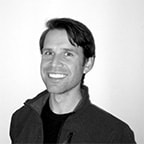 Blake Troxel is a natural resource manager with a particular interest in the connection between forests and people. His efforts aim to refine our understanding of urban forest structure and function; encourage the innovative application and practice of urban forestry; and explore the use of market tools as an incentive for forest management and conservation. He currently works as a consultant for the Vanuatu Department of Forests, and as a consulting forester and urban forester in California.
Blake Troxel is a natural resource manager with a particular interest in the connection between forests and people. His efforts aim to refine our understanding of urban forest structure and function; encourage the innovative application and practice of urban forestry; and explore the use of market tools as an incentive for forest management and conservation. He currently works as a consultant for the Vanuatu Department of Forests, and as a consulting forester and urban forester in California.

